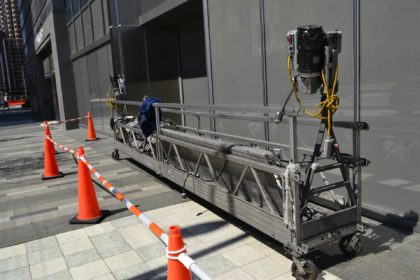
By Anja Van Wijk, Senior Associate and Kyle Venter, Candidate Attorney
23 November 2020
- Introduction
Who is responsible for structural, internal and external repairs or maintenance on a rental property? Usually, the lease agreement entered into between a landlord and tenant would govern where liability falls. If the lease agreement is silent, or there is no written lease agreement in place between the parties, the common law will dictate who the responsible party should be.
2. The Landlord’s Obligations under Common Law
As mentioned above, where there is no written lease agreement setting out the specific obligations of maintenance, under common law and legislation,[1] it is the landlord’s obligation to place the dwelling in a condition reasonably fit for the purpose for which it is to be let. In other words, the dwelling must be in “a good state of repair” so that the tenant is able to have undisturbed use and enjoyment of the property. The landlord is also obliged to maintain the dwelling and carry out repairs during the entire lease period.
The landlord has to ensure the following is in good and safe working order while the tenant occupies the dwelling: – electricity supply, plumbing system, heating, ventilation and working and unbroken, door fixtures and windows. Further, if the landlord lets the dwelling with a geyser, cupboards, stove, refrigerator and any other appliances, it is the landlord’s duty to ensure these are in working order at the time of entering into a lease and during the entire period of the lease.
The landlord is also required to maintain and carry out external repairs, which includes attending to repair of damage caused to roofs, windows, doors, plumbing, repair works and gutters. The landlord also has a legal duty to keep every part of the external dwelling clean and free of rodents, dirt, garbage or any other offensive material. Based on common law, the landlord is therefore required to maintain the property both structurally, internally and externally at all times.[2]
3. The Tenant’s obligation under the Rental Housing Act
The Rental Housing Act[3] (the “Act”) also places certain obligations on the tenant with regards to maintenance and specifies that the tenant must maintain the property in a clean, tidy and safe state of repair. Further, the Act requires the tenant to use all electrical, plumbing, sanitary, heating, ventilating, air-conditioning and other facilities and appliances in a reasonable manner and refrain from intentionally or negligently damaging the property itself or the items in the property.
The Act also stipulates that the tenant is also responsible to maintain or replace electrical globes, fittings and switches, water-borne taps, stoves, locks, handles and windows, where damage has not been due to natural causes, as well as maintaining any swimming pool including but not limited to all pumps, hoses and accessories in good order and repair, subject to fair wear and tear. The tenant is also supposed to keep the garden in a neat and tidy state.
Essentially, the main objective is that the property is handed back to the landlord in the same condition as the tenant received it, “fair wear and tear” excluded. What constitutes “fair wear and tear” will be expanded on in this article below.
4. The Landlord’s obligations under the Lease Agreement
If the parties wish, they can agree that the tenant will take over certain duties or obligations in relation to repairs and maintenance of the landlord. For instance, a tenant can undertake to maintain a certain or specific portion, or all of the property, and thereby relieve the landlord of his or her common-law duty.
Parties are however required to include an express clause in a lease agreement that the tenant will be responsible for maintaining the property. However, in such a clause, “fair wear and tear” will be excepted from the tenant’s obligations.
5. What is “fair wear and tear”?
The concept of “fair wear and tear” is not legally defined and is subjective, which means that it depends on the circumstances or is determined on a case by case basis. In general, however, “fair wear and tear” is considered to be the damage that happens through ordinary day-to-day use of the property by the tenant.
A general rule of thumb is that, if a tenant has damaged something that does not normally wear out, or the tenant has substantially shortened the lifespan of something that does wear out, the tenant may be charged the pro-rated cost of the repair or replacement of the item. The landlord should take into account how old the item was and how long it may have lasted otherwise, as well as the cost of repair or replacement of the item.
The most common examples of “fair wear and tear” may include the following: –
- Faded paint or wallpaper due to sunlight;
- Faded curtains;
- Carpet wear caused by normal use;
- Furniture marks on carpets;
- Warped windows caused by rain or sunshine;
- Warped doors caused by age, temperature or moisture;
- Broken appliances (not caused by misuse);
- Dirty grout;
- Loose handles or doors on kitchen or bathroom cabinets; and/or
- Blown light bulbs;
If the landlord wants to claim for damage to the property, the landlord will have to show that this damage to the property is beyond what is considered to be “fair wear and tear”. In this regard, it is essential that the landlord keeps a detailed record of any repairs needed and further that the parties have a complete and accurate record of the state of the property and its contents before and after the tenancy (this is usually done by means of an in-going and out-going inspection between all parties or a “snag” list).
6. Remedies available for Landlord or Tenant upon breach of obligations
The issue of maintenance in a rental property is arguably one of the most contentious issues that often leads to many disagreements between landlords, tenants and agents. These issues can frequently result in legal action in the courts or the lodging of complaints at the Rental Housing Tribunal.
Where the landlord is responsible and subsequently fails to carry out the necessary repairs or fails to maintain the property in a proper condition, the tenant must notify the landlord in writing of any repair that needs to be carried out. In the event that the landlord fails to respond or effect the repairs or maintenance, the tenant has the option of cancelling the lease agreement for breach by the landlord.
Alternatively, the tenant can place the landlord on 14 days’[i] notice (or further period as agreed to between the parties) to carry out the necessary repairs and further inform the landlord that should he or she fail to respond, the tenant would attend to such repairs and deduct the cost from the rental (only if the lease agreement allows for this deduction from the rental amounts due by the tenant).
Tenants sometimes resort to withholding their rental payments if they feel their landlord is not maintaining the property to their standards.[4] It is, however, important to note that the tenant cannot simply unilaterally decide that they are entitled to withhold a portion of the rental amount and unilaterally decide what amount to deduct.[5] It is the court which has to grant an order to that effect first. The reasons for this are twofold. Firstly, the tenant has a contractual obligation to pay the agreed-upon rental and his/her failure to effect rental payments as agreed would mean that he/she is in breach of the lease agreement. Secondly, the courts do not simply allow individuals to unilaterally decide that they are suffering damages and unilaterally decide what amount to attribute to these damages and withhold partial or full rental payments. If the tenant does indeed unlawfully withhold rental due to a perceived impression that the landlord is not holding up his/her side of the lease agreement, the landlord may be able to demand full rental payment and cancel the lease agreement if the tenant does not remedy his/her breach in the specified time period. Further, in the event that rental is no longer forthcoming from a tenant, there is an argument to be made that, upon non-payment of rental, the landlord’s reciprocal duty to maintain the property ceases.
A landlord can take action against the tenant for failing to maintain the dwelling and to carry out repairs if the tenant contracted to take over the landlord’s obligations. In the event of a dispute, the terms of the lease agreement would depict the landlord’s remedies, which may include the cancellation of the lease agreement, a possible damages claim against the tenant and/or deduction of the costs of the repairs from the rental deposit held by the landlord. In this case, the landlord should consult the lease agreement to check his or her available remedies.
In terms of repairs deducted from the rental deposit, if a tenant feels that their landlord has deducted too much from their deposit, or the whole deposit has been withheld for damages but the tenant feels that these are” fair wear and tear” to the property, the tenant can contact the Rental Housing Tribunal to attempt to mediate or remedy the dispute.
To avoid having to use the Rental Housing Tribunal, it is advisable for landlords to clearly state in the lease agreement exactly what “fair wear and tear” is, included should be a precise description of what repair or maintenance obligations are imparted on each party and what damages would entail for both parties in case of non-compliance.
Please note: this article is for general public information and use. It is not to be considered or construed as legal advice. Each matter must be dealt with on a case by case basis and you should consult an attorney before taking any action contemplated herein.
Writers hereof guide readers further that various matters discussed herein can change, depending on each and every contract and should not be considered as true and correct for all contracts.
[1] Chapter 3 of the Rental Housing Act No 50 of 1999.
[2] Depending on the type of Property, this duty may fall on the Community Scheme in cases of sectional title schemes. However, the landlord has a duty to take up any aggrieve the tenant may have with the responsible parties.
[3] Rental Housing Act No 50 of 1999.
[4] In Loch Logan Waterfront (Pty) Ltd v Carwash 4U (Pty) Ltd (3618/2011) [2012] ZAFSHC 32 (1 March 2012) the Free State High Court rejected a tenant’s argument that it was entitled to withhold the entire rent as the electrical equipment in the property were affected by leaks when it rained (which leaks the landlord failed to repair despite repeated demands). The landlord was therefore entitled to rely on the cancellation clause and validly cancelled the contract due to the tenant’s non-payment of the rent. The court stated that “the complete withholding of rent was not a recognised remedy in law.”
[i] Section 6 of the Rental Housing Tribunal Unfair Practice Regulations

Senior Associate at Schindlers Attorneys
Phone: +27 (0) 11 448 vanwijk@schindlers.co.za

Candidate Attorney at Schindlers Attorneys
Phone +27 (0) 11 448 9642
venter@schindlers.co.za

